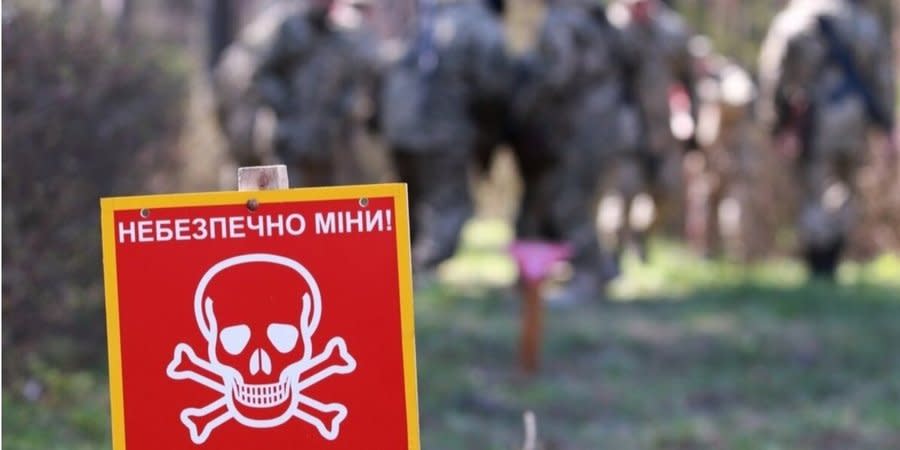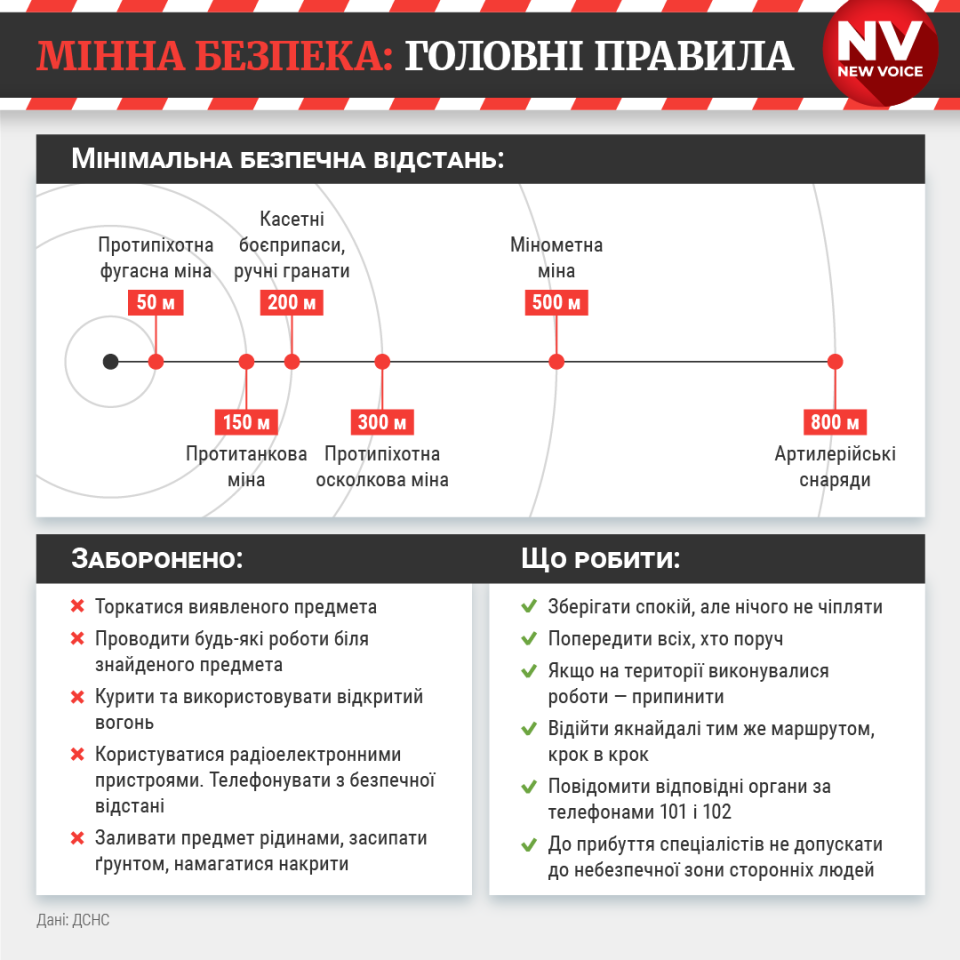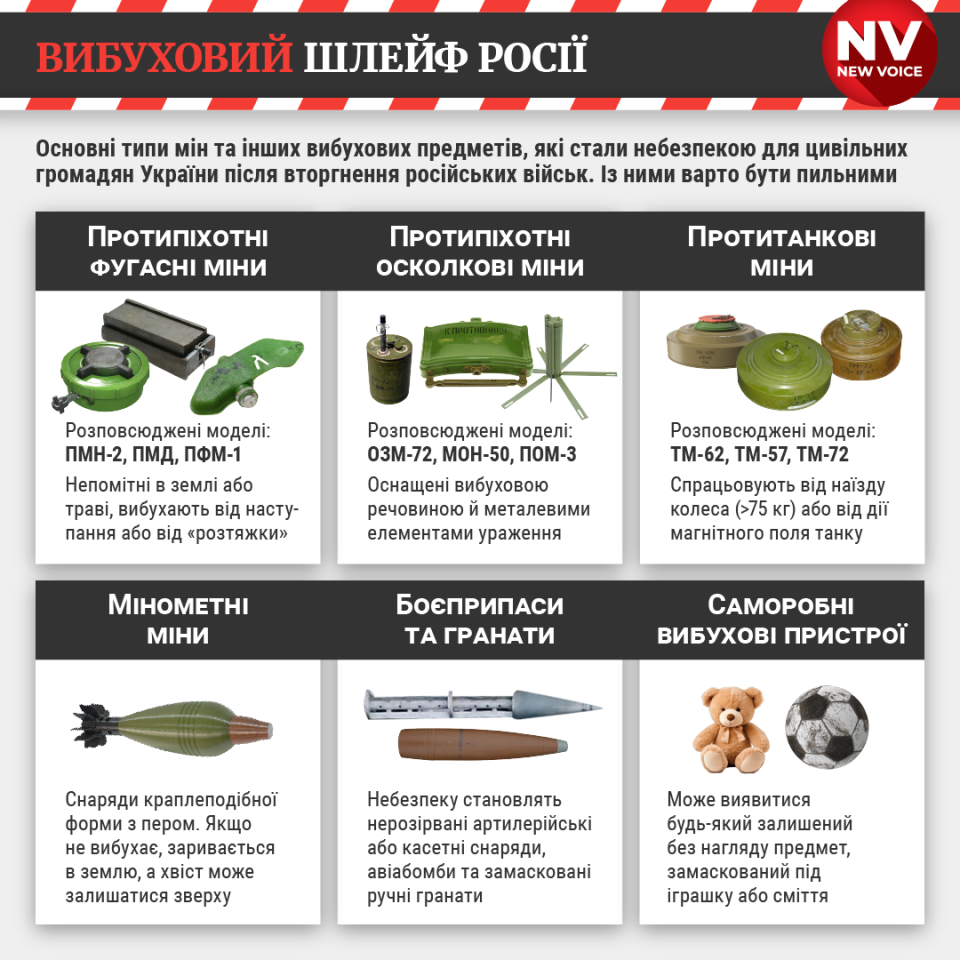How to avoid landmines and what to do if you find one

Landmines and explosive devices remain one of the biggest threats to civilians in Ukraine - and will remain so for the duration of the war.
Complete humanitarian demining of the country is only possible after the war ends.
Approximately 300 Ukrainian civilians, including 15 children, have died from landmine explosions in frontline and de-occupied areas since the Russian full-scale invasion started, Ukraine’s Interior Minister, Ihor Klymenko, reported in April 2024.
Around 25% of Ukraine's territory is now contaminated with explosive remnants.
Demining in Ukraine is divided into three stages:
Read also: 757 years needed to fully demine Ukraine at current pace, GLOBSEC analysts estimate
Combat Demining: Military personnel clear the mines as they advance
Operational Demining: Police and rescuers stabilize de-occupied areas
Humanitarian Demining: Complete and thorough removal of explosive devices from both land and water
"The area can be considered safe for civilians and economic activities only after humanitarian demining is finished. A certificate from demining operators confirms this," Klymenko said.
“Unfortunately, this is a very lengthy process. Full humanitarian demining on a national scale will only be possible after the war."
Until then, landmines pose a threat to thousands of Ukrainians.
Here are some basic rules on how to stay safe in mined or potentially dangerous areas, according to the Strategic Communications and Information Security Center and the Ukrainian Health Ministry's Center for Public Health.
Read also: UNDP trials innovative technologies that could rid Ukraine of landmines in 10 years
Basic rules if you discover a mine
What not to do:
Do not touch the discovered item
Do not conduct any work near the item
Do not smoke or use open flames
Do not use electronic devices (make calls from a safe distance)
Do not pour liquids on, cover with soil, or try to conceal the item
Do not allow people to gather near the item
What to do:
Stay calm and do not touch anything
Warn everyone nearby
Cease all current activities
Move back as far as possible using the same route, step by step
Inform the authorities by calling 101 and 102
Keep others away from the dangerous area until specialists arrive
Read also: Ukraine develops drone for mine detection, works ‘four times faster than a human’
Minimum safe distances from mines and explosives
Anti-personnel blast mine: 50 meters
Anti-tank mine: 150 meters
Cluster munitions, hand grenades: 200 meters
Anti-personnel fragmentation mine: 300 meters
Mortar mine: 500 meters
Artillery shells: 800 meters
Aerial bombs: 1500 meters

How to reduce the risk of encountering a mine
Pay attention to signs indicating dangerous areas.
Ukraine's State Emergency Services (SES) identifies four main types of warning signs:
Official warning signs: Square or triangular signs with a red background featuring a skull and crossbones and warnings such as "Warning, Mines!" or "Danger, Mines!"
Unofficial warning signs: Homemade signs with warnings or even the word "Mines!" on fences, roads, or walls
Evidence and consequences of explosive devices: Disturbed soil, fragments of explosives, or unexploded ordnance
Behavioral evidence: Overgrown grass, dense vegetation, abandoned agricultural fields, and unused roads or paths

We’re bringing the voice of Ukraine to the world. Support us with a one-time donation, or become a Patron!
Read the original article on The New Voice of Ukraine

